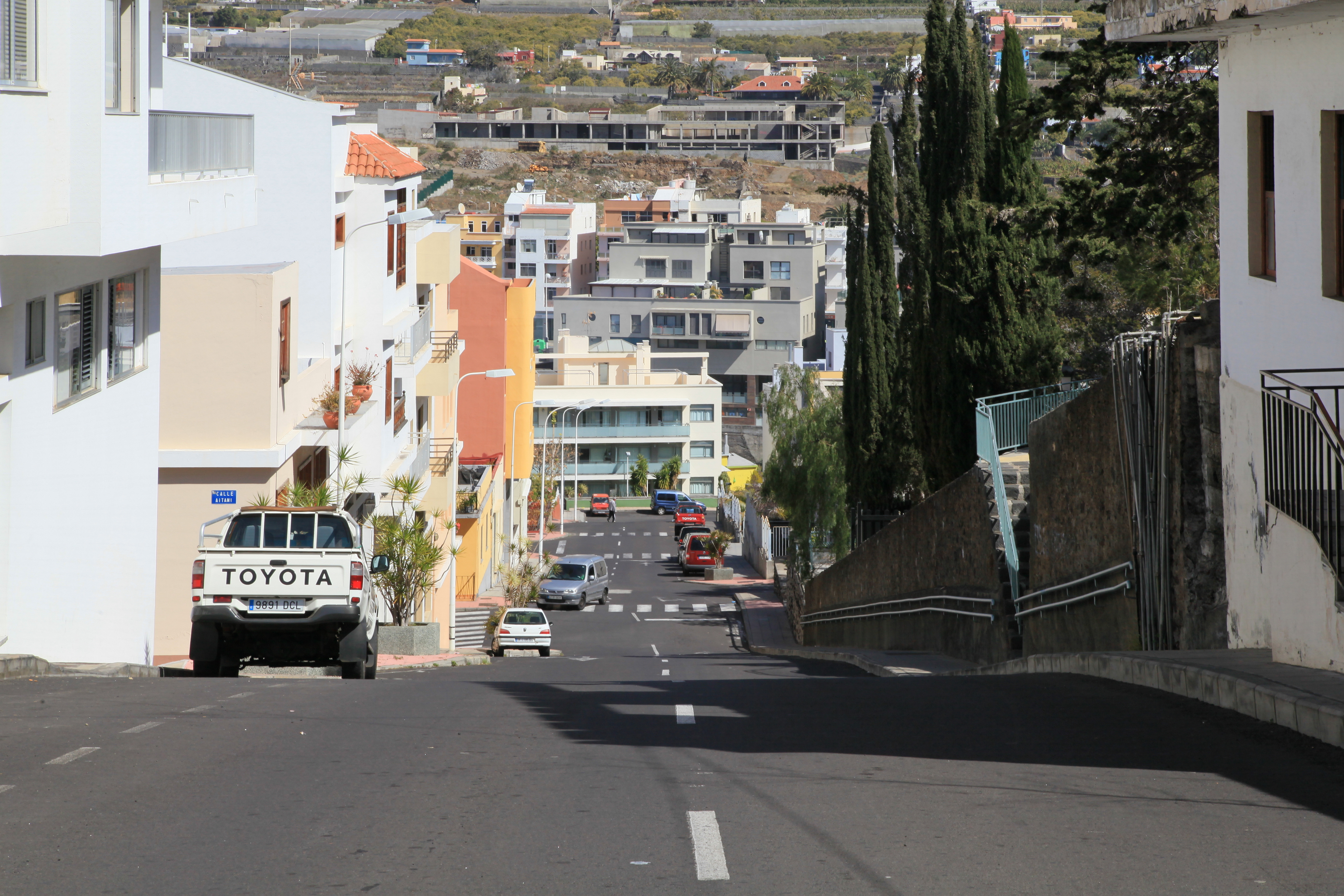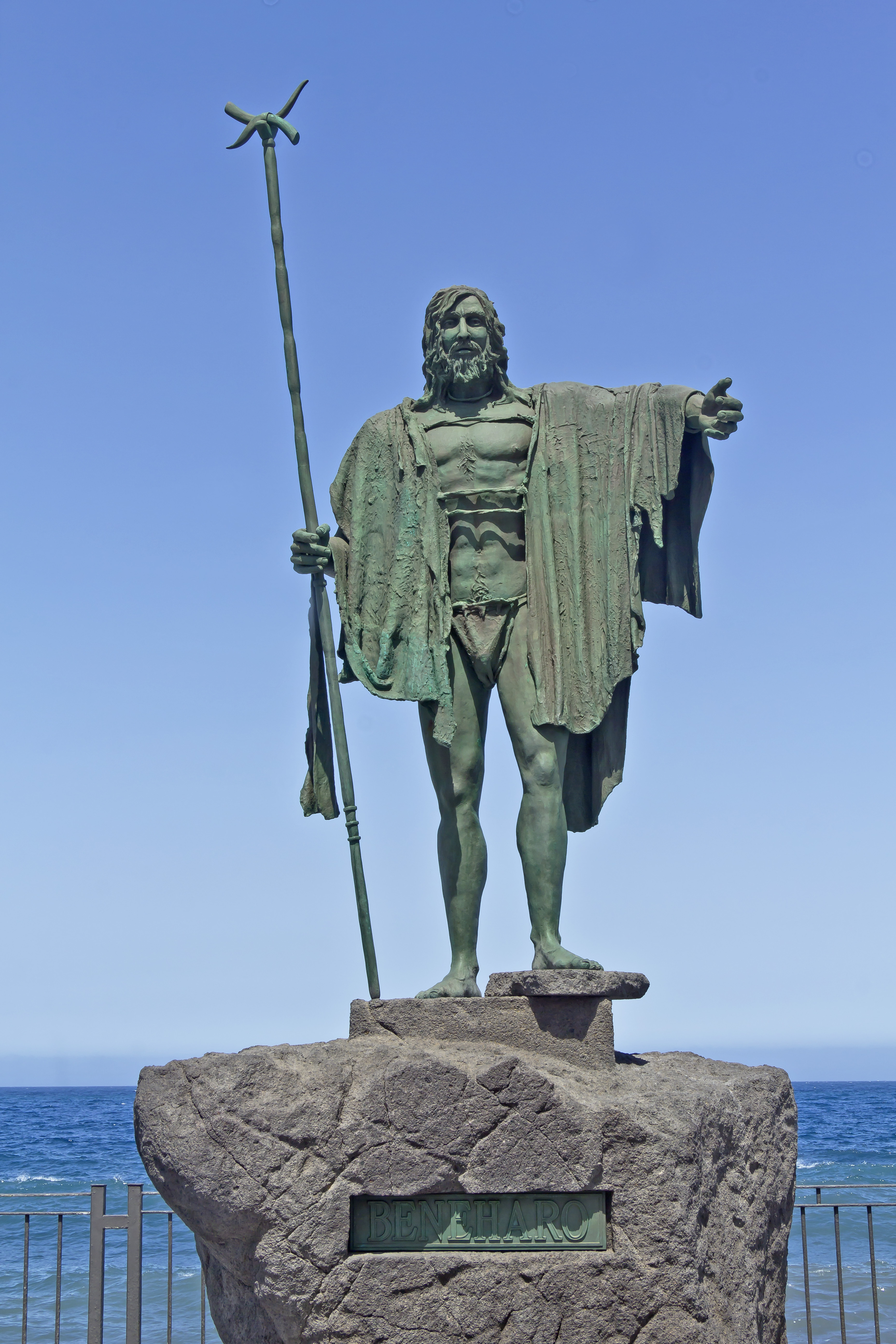|
Guajara (guanche)
Guajara or Guaxara are the names of an alleged Guanche woman, who was a character in the epic poem '' Antigüedades de las Islas Afortunadas '' of Antonio de Viana, Conquista de Tenerife. Biography Guajara is the lover of Tinguaro, the brother of the king of Mencey Bencomo, and one of the friends of Dácil. Menecy Bencomo betrays Guajara. The Mencey Beneharo promises his brother Tinguaro Tinguaro (or Chimechia) (died December 1495) was a Guanche ''sigoñe'' (warrior) of Tenerife, also known as Achimenchia Tinguaro. He was in charge of the area known as Acentejo. Half-brother of the ''mencey'' (king) Bencomo, Tinguaro led the Guan ... the hand of his daughter, Guacimara, and the legacy of his reign if Tinguaro is victorious in the battle against the Spaniards. Guajara is jealous of Tinguaro's interest in Guacimara and manipulates Ruymán, Tinguaro 's nephew and Guacimara's lover, to avoid the promised marriage. The marriage proceeds and Guajara commits suicide by jumping int ... [...More Info...] [...Related Items...] OR: [Wikipedia] [Google] [Baidu] |
Guanches
The Guanches were the indigenous inhabitants of the Canary Islands in the Atlantic Ocean some west of Africa. It is believed that they may have arrived on the archipelago some time in the first millennium BCE. The Guanches were the only native people known to have lived in the Macaronesian archipelago region before the arrival of Europeans, as there is no accepted evidence that the other Macaronesian archipelagos (the Cape Verde Islands, Madeira and the Azores) were inhabited. After the Spanish conquest of the Canaries starting in the early 15th century, many natives were wiped out by the Spanish settlers while others interbred with the settler population, although elements of their culture survive within Canarian customs and traditions, such as Silbo (the whistled language of La Gomera Island). In 2017, the first genome-wide data from the Guanches confirmed a North African origin and that they were genetically most similar to ancient North African Berber peoples of the ... [...More Info...] [...Related Items...] OR: [Wikipedia] [Google] [Baidu] |
Tenerife
Tenerife (; ; formerly spelled ''Teneriffe'') is the largest and most populous island of the Canary Islands. It is home to 43% of the total population of the archipelago. With a land area of and a population of 978,100 inhabitants as of January 2022, it is also the most populous island of Spain and of Macaronesia. Approximately five million tourists visit Tenerife each year; it is the most visited island in the archipelago. It is one of the most important tourist destinations in Spain and the world, hosting one of the world's largest carnivals, the Carnival of Santa Cruz de Tenerife. The capital of the island, , is also the seat of the island council (). That city and are the co-capitals of the autonomous community of the Canary Islands. The two cities are both home to governmental institutions, such as the offices of the presidency and the ministries. This has been the arrangement since 1927, when the Crown ordered it. (After the 1833 territorial division of Spain, until ... [...More Info...] [...Related Items...] OR: [Wikipedia] [Google] [Baidu] |
Tinguaro
Tinguaro (or Chimechia) (died December 1495) was a Guanche ''sigoñe'' (warrior) of Tenerife, also known as Achimenchia Tinguaro. He was in charge of the area known as Acentejo. Half-brother of the ''mencey'' (king) Bencomo, Tinguaro led the Guanche forces to victory against the invading Castilians in the First Battle of Acentejo. He fell at the Battle of Aguere, a crushing defeat for the original population of the island, resulting in the conquest of the island by the Castilians. References * José Juan Acosta; Félix Rodríguez Lorenzo; Carmelo L. Quintero Padrón, ''Conquista y Colonización'' (Santa Cruz de Tenerife: Centro de la Cultura Popular Canaria, 1988), p. 51-2. *Batalla de Acentejo* Tinguaro Tinguaro Tinguaro Tinguaro (or Chimechia) (died December 1495) was a Guanche ''sigoñe'' (warrior) of Tenerife, also known as Achimenchia Tinguaro. He was in charge of the area known as Acentejo. Half-brother of the ''mencey'' (king) Bencomo, Tinguaro led the G ... Gu ... [...More Info...] [...Related Items...] OR: [Wikipedia] [Google] [Baidu] |
Mencey
The Guanches were the indigenous inhabitants of the Canary Islands in the Atlantic Ocean some west of Africa. It is believed that they may have arrived on the archipelago some time in the first millennium BCE. The Guanches were the only native people known to have lived in the Macaronesian archipelago region before the arrival of Europeans, as there is no accepted evidence that the other Macaronesian archipelagos (the Cape Verde Islands, Madeira and the Azores) were inhabited. After the Spanish conquest of the Canaries starting in the early 15th century, many natives were wiped out by the Spanish settlers while others interbred with the settler population, although elements of their culture survive within Canarian customs and traditions, such as Silbo (the whistled language of La Gomera Island). In 2017, the first genome-wide data from the Guanches confirmed a North African origin and that they were genetically most similar to ancient North African Berber peoples of the ne ... [...More Info...] [...Related Items...] OR: [Wikipedia] [Google] [Baidu] |
Bencomo
Bencomo (; 1438 – 1495) was the penultimate ''mencey'' or king of Taoro, a Guanche ''menceyato'' on the island of Tenerife. He fought in the First Battle of Acentejo, a victory for the Guanches against the invading Castilians, after having refused the terms of Alonso Fernández de Lugo. He may have perished on the heights of San Roque during the Battle of Aguere alongside his brother Tinguaro. He had several children, including Adjona, Dácil, Bentor Bentor ( 1463 – February 1495), sometimes also called Ventor, Bentore, Benytomo, or Bentorey, was the last mencey or king of Taoro from November 1494 until his suicide in February 1495. A native Guanche prince in the Canary Islands during ..., Ruiman, Rosalva, Chachiñama, and Tiñate. Bentor succeeded him as mencey until his suicide in February 1495. References 1495 deaths 15th-century Berber people People from Tenerife Military personnel killed in action Guanche people Year of birth uncertain 1438 births ... [...More Info...] [...Related Items...] OR: [Wikipedia] [Google] [Baidu] |
Dácil
Princess Dácil was a Guanche princess of the kingdom of Taoro on the island Tenerife (in the Canary Islands), best known for her marriage to a conqueror of the island. Early life Dácil or Dácila was born in the ancient ''Menceyato'' (kingdom) of Taoro (Tenerife, Canary Island), during the early second half of the fifteenth century. She was daughter to ''Mencey'' (king) Adjona and Caseloria and granddaughter of Bencomo. She had five brothers: Bentor, Ruiman, Rosalva, Chachiñama, and Tiñate. Dácil was admired throughout the island for her beauty. She was described as blonde and freckled, with green eyes, like many other aborigines of northern Tenerife. Personal life Dácil was initially intended to marry Duriman el Montañes (Duriman of the Mountains). However, with the arrival of the Spanish Captain Fernando García del Castillo, a Castilian officer of a Spanish Cavalry unit, Dácil gained another suitor. Captain Fernando García del Castillo was taken prisoner and plac ... [...More Info...] [...Related Items...] OR: [Wikipedia] [Google] [Baidu] |
Beneharo
Beneharo was a Guanches, Guanche king of Menceyato de Anaga on the island of Tenerife. Beneharo made peace in 1492 with Lope de Salazar, who had been sent by the governor of Gran Canaria Francisco Maldonado. After a slave raid shortly after against the Guanches of Anaga, the mencey withdrew its support to the Europeans although after the landing of Alonso Fernández de Lugo renewed the peace with the Castilians. A bronze statue of Beneharo is located in Candelaria, Tenerife, Candelaria with the other menceyes Guanches of Tenerife. References Notes * José Juan Acosta; Félix Rodríguez Lorenzo; Carmelo L. Quintero Padrón, ''Conquista y Colonización'' (Santa Cruz de Tenerife: Centro de la Cultura Popular Canaria, 1988), p. 51-2. *Batalla de Acentejo* {{in lang, es} External links Los guanches People from Tenerife Military personnel killed in action Guanche people ... [...More Info...] [...Related Items...] OR: [Wikipedia] [Google] [Baidu] |
People From Tenerife
A person ( : people) is a being that has certain capacities or attributes such as reason, morality, consciousness or self-consciousness, and being a part of a culturally established form of social relations such as kinship, ownership of property, or legal responsibility. The defining features of personhood and, consequently, what makes a person count as a person, differ widely among cultures and contexts. In addition to the question of personhood, of what makes a being count as a person to begin with, there are further questions about personal identity and self: both about what makes any particular person that particular person instead of another, and about what makes a person at one time the same person as they were or will be at another time despite any intervening changes. The plural form "people" is often used to refer to an entire nation or ethnic group (as in "a people"), and this was the original meaning of the word; it subsequently acquired its use as a plural form of ... [...More Info...] [...Related Items...] OR: [Wikipedia] [Google] [Baidu] |
Guanche
Guanche may refer to: *Guanches, the indigenous people of the Canary Islands *Guanche language Guanche is an extinct language that was spoken by the Guanches of the Canary Islands until the 16th or 17th century. It died out after the conquest of the Canary Islands as the Guanche ethnic group was assimilated into the dominant Spanish cul ..., an extinct Berber language, spoken by the Guanches until the 16th or 17th century *'' Conus guanche'', a sea snail of family Conidae {{Disambiguation Language and nationality disambiguation pages ... [...More Info...] [...Related Items...] OR: [Wikipedia] [Google] [Baidu] |






_1938.jpg)